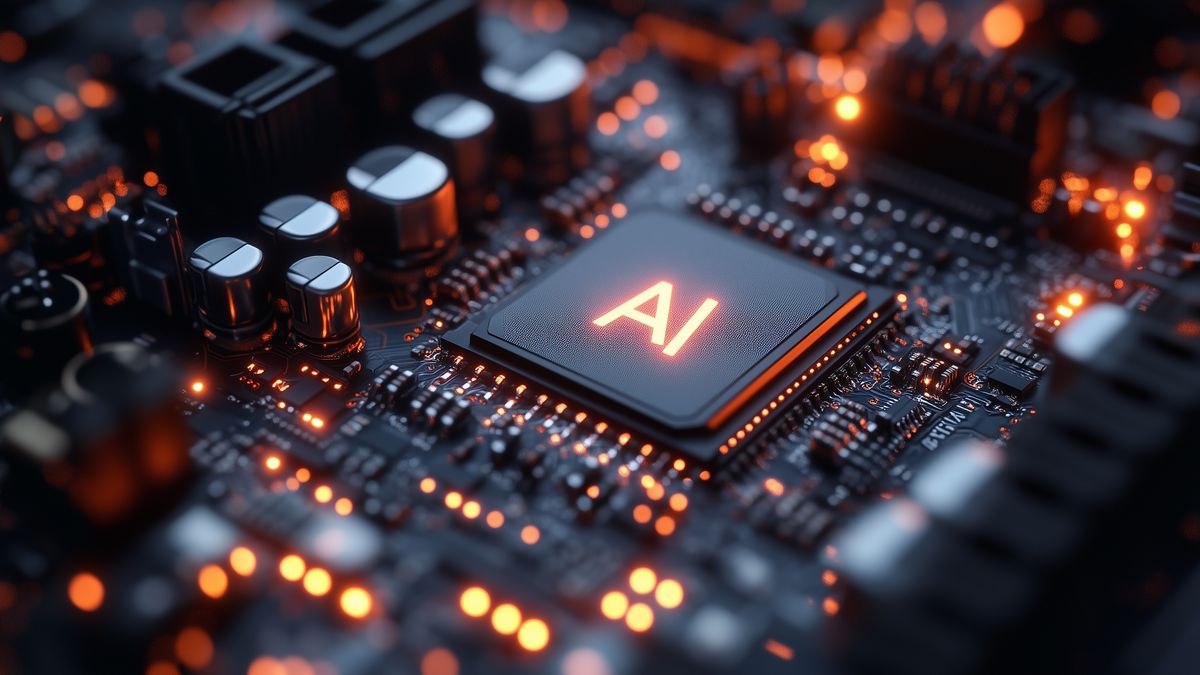ARTIFICIAL INTELLIGENCE
Microsoft's Microfluidic Cooling Targets AI Data Center Heat
Microsoft unveils microfluidic cooling for AI chips, directing liquid inside silicon to combat rising heat in data centers and improve energy efficiency.
- Read time
- 4 min read
- Word count
- 923 words
- Date
- Sep 24, 2025

🌟 Non-members read here
Innovating Thermal Management for AI Hardware
Microsoft has introduced a groundbreaking cooling technology designed to address the escalating thermal challenges posed by artificial intelligence (AI) chips. This innovative system utilizes microfluidics, a method that channels liquid directly within silicon chips, promising a significant shift in how data centers manage the intense heat generated by AI workloads. The company validated its design by successfully cooling a server running simulated Microsoft Teams meetings, demonstrating its practical application.
The core of this technology involves etching tiny channels directly onto the silicon chip’s back. These grooves facilitate the direct flow of cooling liquid onto the chip, enabling a more efficient removal of heat. Additionally, Microsoft leveraged AI to pinpoint unique heat signatures on the chip, allowing for more precise and targeted coolant delivery. This combination of microfluidics and AI-driven precision represents a notable advancement in thermal management for high-performance computing.
Lab-scale tests conducted by Microsoft revealed impressive results. Depending on the specific workloads and configurations, microfluidics demonstrated up to three times greater efficiency in heat removal compared to traditional cold plates. The technology also achieved a 65% reduction in the maximum temperature rise of the silicon within a Graphics Processing Unit (GPU), though this can vary based on the chip type. These advancements are expected to enhance power usage effectiveness, a crucial metric for data center energy efficiency, and contribute to reduced operational costs. To aid in prototyping, Microsoft collaborated with Corintis, a Swiss startup, to optimize a bio-inspired design using AI, making the cooling of chip hotspots more efficient than conventional straight channels.
The Escalating Pressure on AI Hardware and Data Center Budgets
The rise of AI workloads and high-performance computing has placed unprecedented demands on data center infrastructure. Among the myriad challenges, thermal dissipation has emerged as a particularly stubborn bottleneck. Traditional cooling methods, such as air-cooling and even advanced cold plates, are struggling to keep pace with the increasing heat generated by new generations of silicon. This struggle is not merely a technical hurdle but also a significant economic burden for data centers globally.
Modern accelerators are producing thermal loads that air-based systems simply cannot handle, and even sophisticated water loops are under strain. The immediate concerns extend beyond the soaring thermal design power (TDP) of GPUs to include grid delays, water scarcity, and the inability of legacy air-cooled facilities to accommodate racks operating at 80 or 100 kilowatts. While cold plates and immersion tanks have offered temporary solutions, their effectiveness is limited due to the resistance of thermal interfaces that impede heat dissipation at the die level. The critical friction point lies in the final segment of the thermal path, between the junction and the package, where performance is often compromised.
Cooling costs represent a substantial portion of a data center’s operational budget. Data centers invest heavily in managing the immense heat generated by servers, networking equipment, and GPUs. For AI infrastructure buildouts projected for 2025, over 45%-47% of the data center power budget typically goes towards cooling. Without significant advancements in cooling method efficiency, this percentage could surge to 65%-70%. For example, Nvidia’s Hopper H100 GPU required 700 watts of power in 2024, a figure that is expected to double with the Blackwell B200 and Blackwell Ultra B300 in 2025, reaching 1000W and 1400W per GPU, respectively. Looking ahead to 2026, the Rubin and Rubin Ultra GPUs are projected to exceed 1800W and 3600W.
The thermal budget per GPU is effectively doubling each year, making it imperative for hyperscalers and neocloud providers to resolve thermal bottlenecks to deploy the latest GPUs and achieve optimal compute performance. Microfluidics-based direct-to-silicon cooling has the potential to limit cooling expenses to less than 20% of the data center’s power budget. However, this would necessitate substantial technological development and optimization, particularly concerning microfluidics structure size, placement, and non-laminar flow analysis in microchannels. If these challenges are overcome, microfluidic cooling could be the sole enabler for GPUs with extreme TDPs, such as the Rubin Ultra GPU’s projected 3.6kW per unit.
The Universal Challenge of Scaling Microfluidics
The intense heat generated by new generations of AI silicon is a universal challenge, impacting major hyperscalers including Amazon Web Services (AWS), Google, Meta, and Oracle. Relying on current solutions like cold plates could impose a “hard ceiling on progress” within as little as five years, transforming thermal constraints into a critical issue for all deploying high-power AI chips. While microfluidics is not a new concept and various approaches have been explored, achieving scalability has proven to be a significant hurdle for the entire industry.
Scaling microfluidics to industrial levels presents several complex difficulties, encompassing manufacturing, implementation, and operational risks. The fabrication of micron-scale channels increases process complexity, potentially leading to higher yield losses due to wafer fragility. Ensuring ultra-reliable sealing is paramount, as even minor leaks or particulate contamination could severely degrade chip performance. Unlike cold plates, which can be replaced, silicon-integrated cooling makes chip replacement the only maintenance option, thereby escalating service costs and logistical complexities. Furthermore, long-term exposure to coolant, even dielectric fluid, can induce chemical and mechanical stress, necessitating extensive qualification to guarantee 5-10 years of reliability.
For microfluidics to become a widely adopted solution, it requires meticulous management of fabrication, reliability, and maintenance risks. It must also be standardized across the broader ecosystem, ensuring seamless integration and operational efficiency. The success of Microsoft’s advancements in microfluidic cooling could pave the way for a new era of sustainable and powerful AI data centers, effectively addressing one of the most pressing technical and economic challenges facing the industry today.